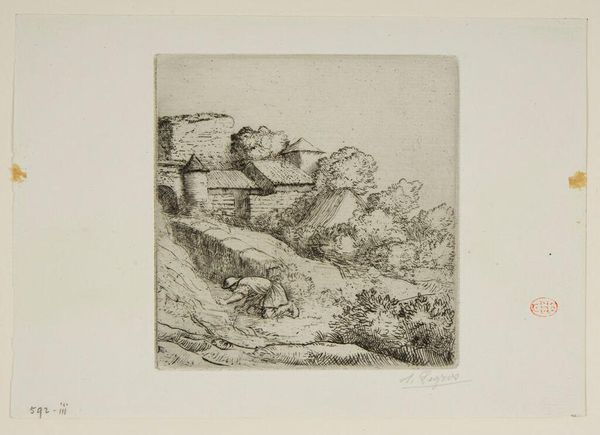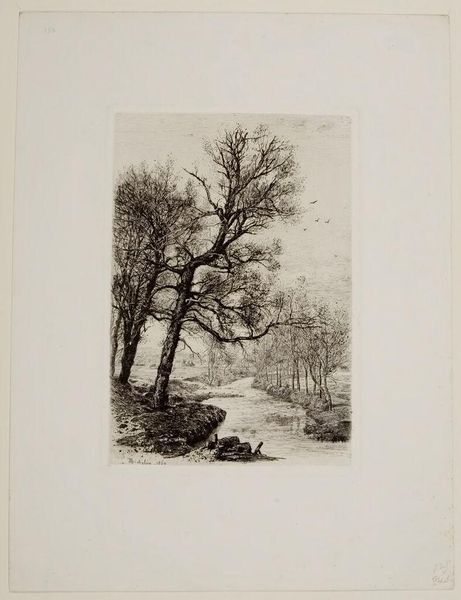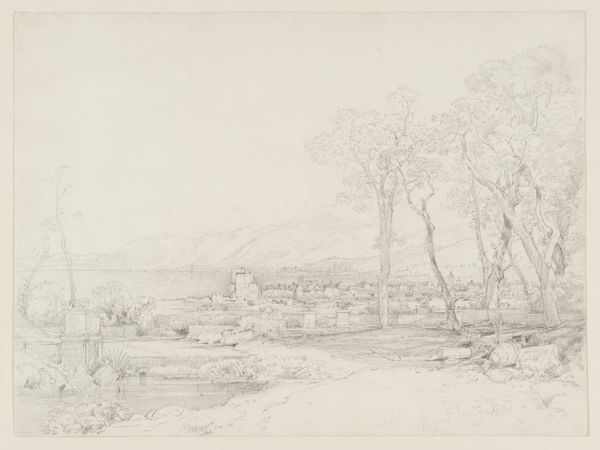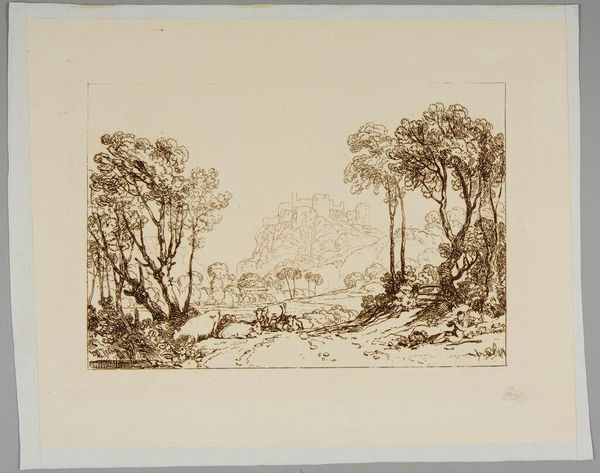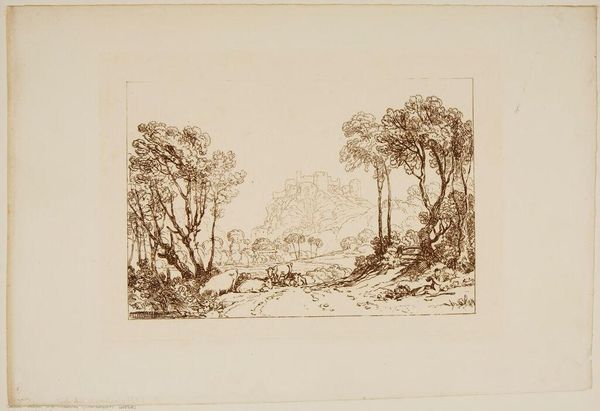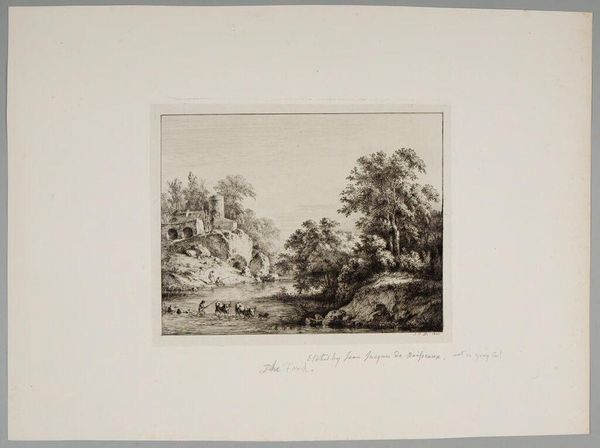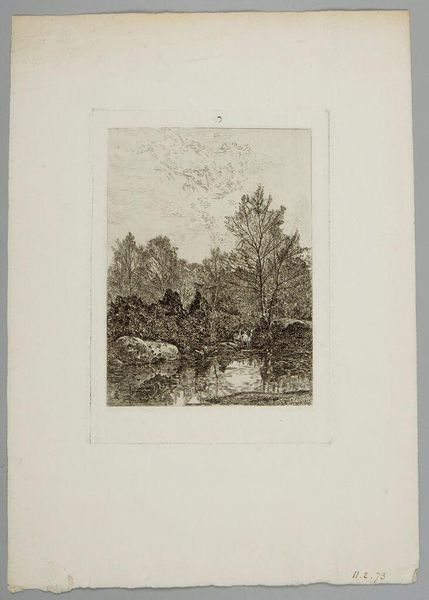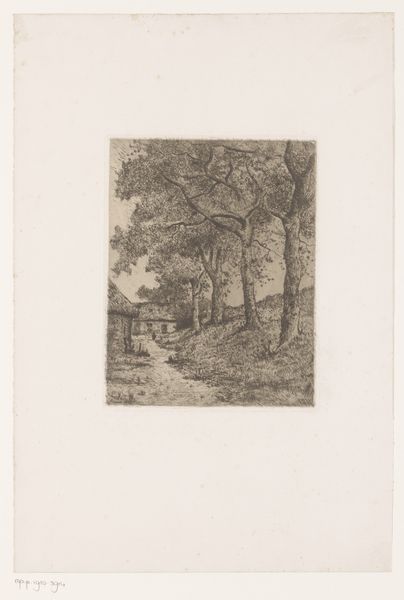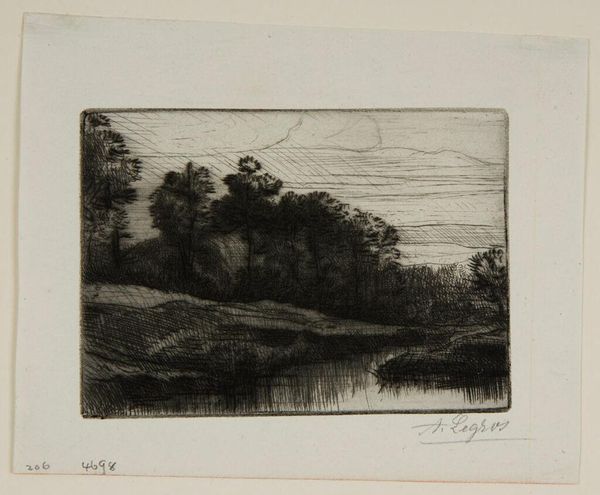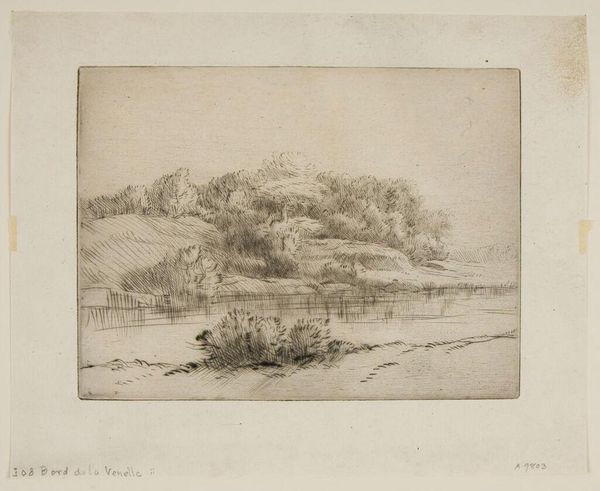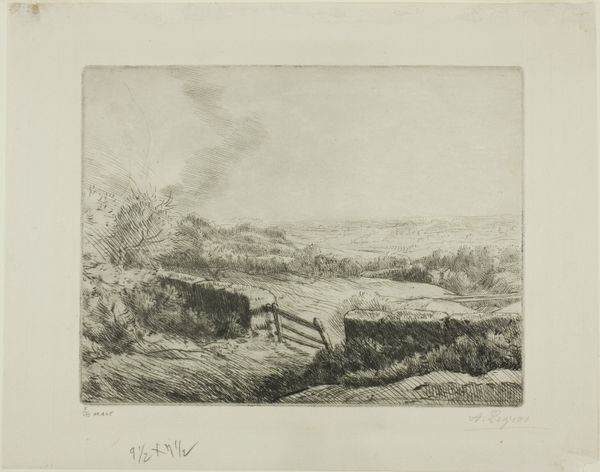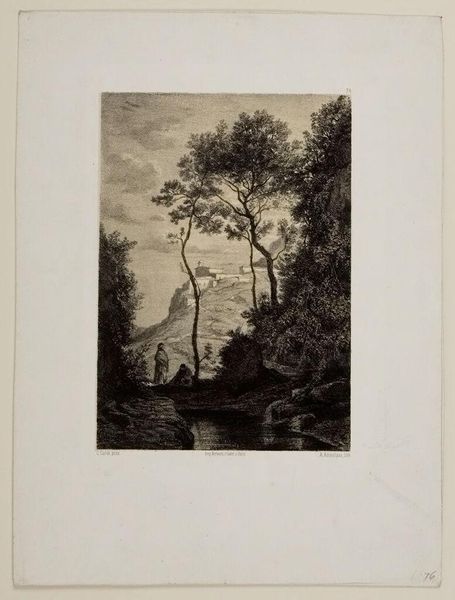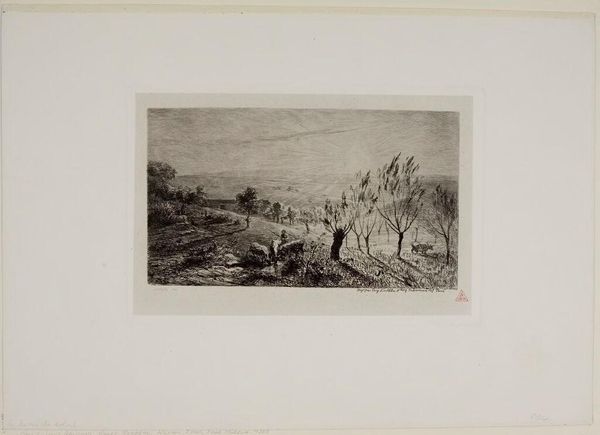
Copyright: CC0 1.0
Curator: Alphonse Legros' etching, "The Washer," portrays two women engaged in laundry by a stream. The lack of a precise date invites us to consider its timeless qualities. What strikes you first? Editor: There's a quiet dignity in their labor. The composition, though simple, speaks volumes about the lives of working-class women and their connection to the landscape. Curator: Legros was deeply engaged with the social realities of labor. Consider the repetitive, physically demanding nature of washing clothes by hand—the constant immersion in water, the struggle against dirt and stains. Editor: Exactly. And we can't ignore the broader context: these women are performing essential work, yet they're relegated to the margins, both socially and economically. Their labor is often invisible, unacknowledged. Curator: The etching process itself reflects a kind of labor. Legros meticulously scratches into the metal plate, creating lines that capture the light and shadow of this scene. There's a direct connection between the artist's hand and the final image. Editor: By depicting this everyday scene, Legros challenges the hierarchy of subjects in art. He elevates the ordinary, giving voice to those who are often silenced. It's a powerful act of representation. Curator: Indeed. It makes you wonder about the hidden costs embedded in the cleanliness of everyday life. Editor: It certainly prompts reflection on whose labor sustains our comfort and convenience.
Comments
No comments
Be the first to comment and join the conversation on the ultimate creative platform.
